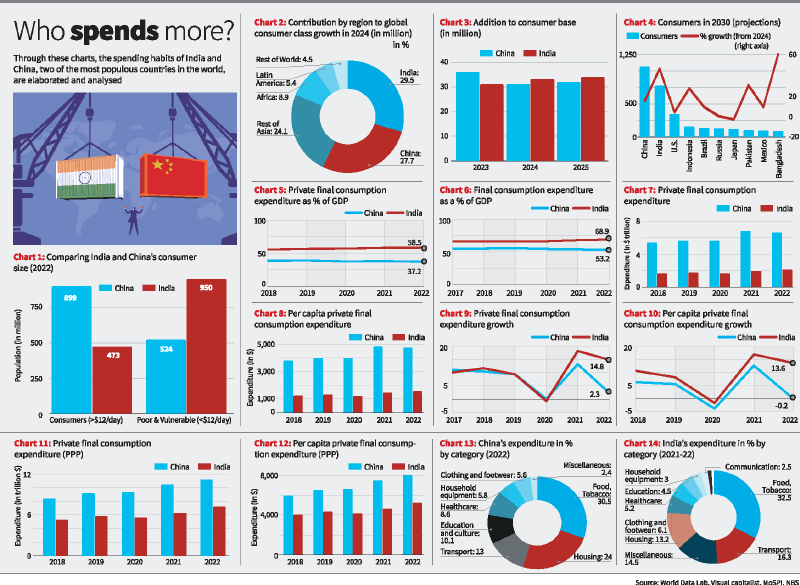21 May 2024 : Daily Current Affairs
1. Helicopter crash kills Iran President Raisi, Foreign Minister Abdollahian
| Topic: GS2 – International Relations |
| Context |
| ● Iran mourns the loss of President Ebrahim Raisi and Foreign Minister Hossein Amir-Abdollahian in a helicopter crash.
● Supreme Leader Ayatollah Khamenei declares mourning and appoints an interim leader, with elections due in 50 days. |
Analysis of the news:
- Iranian President Ebrahim Raisi and Foreign Minister Hossein Amir-Abdollahian were confirmed dead after their helicopter crashed in a fog-shrouded mountain region.
- Supreme Leader Ayatollah Ali Khamenei declared five days of mourning and appointed Vice-President Mohammad Mokhber, 68, as the interim leader.
- Elections are expected to be held within 50 days to determine the new president.
- Iranian state TV announced Raisi’s death, referring to him as achieving “the highest level of martyrdom,” and broadcast his life pictures with a Quran recitation.
- Amidst ongoing search efforts, Ayatollah Khamenei assured Iranians of the country’s stability and continuity in leadership.
- Ali Bagheri, a former top nuclear negotiator, was appointed Acting Foreign Minister.
- A black flag was raised at a major Shia shrine in Qom as a sign of mourning for Raisi, who was considered a potential successor to the Supreme Leader.
| Political System In Iran: |
| ● Iran’s political system is a unique hybrid of theocratic and democratic elements.
● Established after the 1979 Islamic Revolution, it combines religious authority with elected institutions. ● At the apex is the Supreme Leader, a cleric who holds significant power over the military, judiciary, and media. The Assembly of Experts, a body of clerics, elects and can dismiss the Supreme Leader. ● Iran’s President, elected by popular vote every four years, heads the executive branch but operates under the Supreme Leader’s oversight. The unicameral legislature, or Majlis, consists of 290 members also elected by popular vote. ● The Guardian Council, composed of clerics and jurists, vets candidates for political office and can veto parliamentary legislation not aligned with Islamic law and the constitution. ● The Expediency Discernment Council resolves legislative disputes between the Majlis and the Guardian Council. This intricate system reflects Iran’s attempt to balance clerical control with republican principles. |
| PYQ: Critically examine the procedures through which the Presidents of India and France are elected. (UPSC CSE (M) GS-2 2022) |
| Practice Question: Compare and contrast the political systems of India and Iran, focusing on their structures, democratic principles, and the role of religion in governance. How do these differences impact their respective governance and policy-making processes? (150 Words /10 marks) |
(Source – The Hindu, International Edition – Page No. – 1)
2. An overlooked molecule could solve the Venus water mystery
| Topic: GS3 – Science and Technology |
| Context |
| ● Recent research suggests a crucial chemical reaction may explain the long-standing discrepancy in the amount of water Venus has lost over billions of years.
● This finding could reshape our understanding of planetary habitability and the history of water on Venus compared to Earth. |
Historical Context
- Over four billion years ago, Venus had enough water to cover its surface with an ocean 3 km deep. Today, it has only enough for an ocean 3 cm deep.
- Scientists have accounted for much of Venus’ water loss but not all of it.
Recent Findings
- A team of U.S. scientists may have found a crucial explanation for the missing water.
- Their study, published in Nature, addresses the gap between expected and observed water loss on Venus.
Reasons for Water Loss
- Hellish Atmosphere: Venus’ carbon dioxide-rich atmosphere creates a strong greenhouse effect, making its surface hotter than water’s boiling point, thus existing only as vapour.
- Proximity to the Sun: The Sun’s heat and ultraviolet radiation break water molecules into hydrogen and oxygen in Venus’ ionosphere.
Theories of Water Loss
- Thermal Process: Hydrodynamic escape, where the Sun’s heat caused hydrogen to escape to space, lasted until the outer atmosphere cooled about 2.5 billion years ago.
- Non-Thermal Process: Present-day water loss through non-thermal processes, specifically focusing on hydrogen atoms escaping to space.
Key Findings of the Study
- The study focused on hydrogen atoms escaping Venus, with oxygen atoms left behind unable to form water.
- Previous estimates suggested more water than satellite observations indicated.
- The new research accounted for a previously overlooked chemical reaction involving the formyl cation (HCO+).
Impact on Water Loss
- Loss of Habitability: Depletion of water rendered Venus uninhabitable, with surface temperatures exceeding 450°C.
- Drying of Surface: Once having enough water for oceans, Venus now has minimal surface water, with any existing water likely existing only in trace amounts.
- Altered Climate: Water loss drastically altered Venus’s climate, contributing to its current extreme conditions and uninhabitable environment.
- Accelerated Atmospheric Changes: Water loss affected atmospheric composition and dynamics, contributing to Venus’s dense carbon dioxide atmosphere and intense greenhouse effect.
Future Missions and Implications
- Future Venus missions should prioritise searching for formyl cation (HCO+) in the upper atmosphere.
- Most upcoming missions focus on the lower atmosphere, but upper atmosphere studies could yield significant insights.
- The anomaly of Venus being 100,000-times drier than Earth raises questions about planetary habitability and the conditions for water retention on planets.
Conclusion
- Understanding Venus’ water loss provides insights into planetary habitability and helps compare Venus and Earth.
- Continued research and future missions dedicated to Venus’ upper atmosphere are essential for resolving these scientific mysteries.
| Understanding Habitability of Planets through Water Loss in Venus’s Atmosphere: |
| ● Comparative Analysis: Studying Venus’s water loss aids in understanding the habitability potential of planets within and beyond our solar system.
● Climate Dynamics: Insights into Venus’s water loss inform climate models, facilitating predictions about the evolution and habitability of exoplanets with similar conditions. ● Atmospheric Composition: Understanding how Venus’s atmosphere evolved due to water loss provides clues about the potential habitability of planets with varying atmospheric compositions. ● Planetary Evolution: By examining the effects of water loss on Venus’s surface and atmosphere, scientists gain insights into the long-term evolution of terrestrial planets and their potential for sustaining life. ● Extraterrestrial Exploration: Findings from Venus’s water loss contribute to the search for habitable exoplanets and guide future missions aimed at identifying potential habitats beyond Earth. |
| Practice Question: Discuss the significance of recent findings on water loss in Venus’ atmosphere and their implications for understanding planetary habitability. (150 Words /10 marks) |
(Source – The Hindu, International Edition – Page No. – 7)
3. India-China consumption comparison
| Topic: GS3 – Indian Economy. |
| Context |
| ● In 2023, India surpassed China as the world’s most populous country amidst declining birth rates and negative population growth in China.
● This demographic shift has significant implications for domestic consumption in both countries and warrants a comparison of their consumption figures and strengths/weaknesses. ● Such a comparison is crucial given the contrasting geopolitical landscapes of India and China. |
Analysis of the news:
Comparison of Consumption Figures:
- Private Final Consumption Expenditure (PFCE): India spends over 58% of its GDP on consumption, while China spends only 38%.
| What is Private Final Consumption Expenditure (PFCE)? |
| ● Private Final Consumption Expenditure (PFCE) refers to the total expenditure by households and non-profit institutions serving households on goods and services.
● It serves as a proxy for consumer spending, encompassing all purchases made by individuals and households for their own use, excluding purchases of dwellings and valuables, as well as government spending and investment. |
- Government Consumption Expenditure: Constitutes 68% of India’s GDP and 53% of China’s GDP, indicating a larger role of government consumption in China.
- Aggregate PFCE: Despite China’s economy being five times larger, its PFCE is only about 3.5 times that of India’s.
- Per Capita PFCE: India’s marginal growth narrows the gap with China in aggregate terms, but China maintains a slight lead in per capita PFCE.
- PPP Comparison: In PPP terms, China’s PFCE is approximately 1.5 times that of India’s, with India closing the gap in 2022.
Expenditure by Categories:
- India: Higher spending on food, clothing, footwear, and transport; lower spending on education, culture, recreation, and healthcare.
- China: Represents a relatively developed market with higher expenditure on housing, white goods, recreation, education, and healthcare.
- Comparison: India spends around half of what China spends on food, transport, and clothing, despite being a fifth of China’s economy.
- Optimism: India’s real growth rates in these categories often outperform China’s nominal growth rates, indicating potential for further growth.
Conclusion:
- The demographic shift in India and China has significant implications for domestic consumption patterns.
- Despite China’s larger economy, India’s consumption expenditure is catching up, especially in terms of ratio and PPP.
- India’s consumer class growth presents opportunities for foreign businesses amid the China+1 narrative, but its consumption patterns still reflect an underdeveloped or developing market compared to China’s relatively mature market.

| PYQ: ‘China is using its economic relations and positive trade surplus as tools to develop potential military power status in Asia’, In the light of this statement, discuss its impact on India as her neighbour. (150 words/10m) (UPSC CSE (M) GS-2 2017) |
| Practice Question: How does the changing demographic landscape in India and China impact their respective consumption patterns and economic dynamics? Discuss with reference to key consumption figures and expenditure categories. (150 Words /10 marks) |
(Source – The Hindu, International Edition – Page No. – 10)
4. India Hosts the 46th Antarctic Treaty Consultative Meeting
| Topic: GS2 – International Relations – Agreements involving India or affecting India’s interests. |
| Context: |
|
Analysis of News:
The Antarctic Treaty: An Overview:
- The Antarctic Treaty, signed by twelve countries in 1959 and coming into force in 1961, established Antarctica as a demilitarized zone dedicated to peaceful purposes and scientific research. Key features of the treaty include:
- Peaceful Use: Antarctica shall be used only for peaceful purposes, prohibiting any form of militarization or fortification.
- Scientific Freedom and Cooperation: Signatories have the freedom to conduct scientific investigations and are required to share their research plans and findings.
- Prohibition of Nuclear Activities: Nuclear testing and the disposal of radioactive waste are banned in Antarctica.
- These principles form the foundation of governance and activities on the continent, ensuring it remains a site for peaceful and cooperative scientific exploration.
India’s Involvement in Antarctica:
- India joined the Antarctic Treaty in 1983 and has been a consultative party ever since, participating in key decision-making processes regarding Antarctica.
- Of the 56 nations in the treaty, only 29 have consultative party status.
Research Stations
India has established several research stations in Antarctica:
- Dakshin Gangotri (1983): Located 2,500 km from the South Pole in Queen Maud Land, it was operational until 1990.
- Maitri (1989): Situated in the Schirmacher Oasis, this station is still operational and can accommodate 65 people in summer and 25 in winter.
- Bharati (2012): Located on the Prydz Bay coast, it focuses on oceanographic and geological studies and can support up to 72 people in summer and 47 in winter.
India plans to open a new station, Maitri II, near the aging Maitri station by 2029. In 2022, India enacted the Antarctic Act, reaffirming its commitment to the treaty.
Agenda for ATCM46:
- The ATCM aims to facilitate global dialogue on various aspects of Antarctic governance, including law, logistics, science, tourism, and environmental protection.
- India will use this platform to promote the idea of peaceful governance in Antarctica and emphasize that geopolitical tensions should not interfere with the continent’s protection and resource management.
Key Focus Areas:
- Tourism Regulation: India will introduce a new working group to regulate tourism activities, aiming to formulate guidelines, track tourist activities, and protect Antarctica’s fragile ecosystem. This initiative is supported by countries like the Netherlands and Norway.
- Sustainable Management: Discussions will cover sustainable resource management, biodiversity prospecting, information exchange, research collaboration, capacity building, and climate change impacts.
India’s Proposals:
- India will officially present its plan to construct Maitri II to the member nations, seeking ATCM’s approval for the new station.
- The meeting will address various critical issues, including the sustainable management of Antarctica, the impact of climate change, and enhancing international cooperation in scientific research.
Conclusion:
- The 46th ATCM in Kochi marks a significant moment for India’s involvement in Antarctic governance.
- By hosting this meeting, India underscores its commitment to maintaining Antarctica as a zone of peace and scientific collaboration.
- The discussions and decisions made during this meeting will play a crucial role in shaping the future governance and preservation of the Antarctic continent.
| Protocol on Environmental Protection to the Antarctic Treaty (the Madrid Protocol) in 1991 |
National Centre for Polar and Ocean Research (NCPOR)
|
| PYQ: The formation of ozone hole in the Antarctic region has been a cause of concern. What could be the reason for the formation of this hole? (2011)
(a) Presence of prominent tropospheric turbulence; and inflow of chlorofluorocarbons (b) Presence of prominent polar front and stratospheric clouds; and inflow of chlorofluorocarbons (c) Absence of polar front and stratospheric clouds; and inflow of methane and chlorofluorocarbons (d) Increased temperature at polar region due to global warming
Ans: (b) |
| Practice Question: Discuss the significance of India hosting the 46th Antarctic Treaty Consultative Meeting (ATCM46) and its role in Antarctic governance. Evaluate India’s contributions and proposals, particularly in the context of scientific research, sustainable management, and tourism regulation in Antarctica. (250 words/15 m) |
(Source: Indian Express; Section: Explained; Page: 13)
5. Venezuela Becomes First Modern Nation to Lose All Glaciers Amid Accelerated Global Warming
| Topic: GS1 – Geography – Climate change – Effects of climate change |
| Context: |
|
Analysis of News:
What are glaciers?
- Glaciers are large masses of ice that form on land over long periods through the accumulation and compaction of snow. They flow like slow rivers and typically develop in regions with near-freezing temperatures, significant snowfall, and minimal summer melting.
- According to the United States Geological Survey (USGS), they usually exist and form in areas where mean annual temperatures reach near the freezing point; winter precipitation leads to significant snow accumulations; and temperatures throughout the remaining year do not cause the complete loss of the previous winter’s snow accumulation.
The Global Context of Shrinking Glaciers:
- The rapid disappearance of Venezuela’s glaciers is part of a broader global trend. Glaciers worldwide are shrinking and vanishing more quickly than previously predicted.
- According to a 2023 study, two-thirds of the world’s glaciers are projected to melt away by 2100 if current climate change trends continue. Glaciers are large, thick masses of ice formed over centuries due to the accumulation of snow, typically found in areas with near-freezing mean annual temperatures and significant winter precipitation.
- They flow slowly like rivers due to their mass and gravity. The United States Geological Survey (USGS) considers a mass of ice around 10 hectares to be a commonly accepted guideline for a glacier.
The Impact of Rising Temperatures:
- Since 1880, the global average temperature has increased by at least 1.1 degrees Celsius, leading to unprecedented glacier melt and disappearance.
- In the Andes, which span Argentina, Bolivia, Chile, Colombia, Ecuador, Peru, and Venezuela, temperatures have risen by 0.10 degrees Celsius over the past seven decades.
- This warming has been a major factor in the disappearance of Venezuela’s glaciers.
- The Humboldt glacier’s melting was further accelerated by the development of El Niño in July 2023, which involves an abnormal warming of surface waters in the equatorial Pacific Ocean and leads to higher temperatures.
The Significance of Glaciers:
- Glaciers play a crucial role in providing freshwater for local communities, plants, and animals.
- Without glaciers, regions would be entirely dependent on spot rainfall for freshwater supplies.
- Cold glacier runoffs help maintain cooler downstream water temperatures, which are essential for the survival of many aquatic species that form a vital part of the food web.
- Additionally, melting glaciers contribute to rising sea levels, with the Greenland and Antarctic ice sheets being the largest contributors to global sea level rise.
Cultural Impact on Venezuela:
- For Venezuela, the loss of its glaciers will have significant cultural impacts. Glaciers were an integral part of the region’s cultural identity, contributing to mountaineering and tourism activities.
- Experts highlighted that the glaciers’ disappearance represents a loss of cultural heritage for the region, affecting local traditions and the economy tied to these natural landmarks.
Conclusion:
- The disappearance of Venezuela’s glaciers marks a significant environmental and cultural milestone.
- It underscores the urgent need for global action to address climate change and mitigate its impacts on natural resources and cultural heritage.
- The case of Venezuela serves as a stark reminder of the broader global trend of glacier melt and the far-reaching consequences for ecosystems, freshwater supplies, and sea level rise.
| What are the impacts of Glacier Loss? |
|
| PYQ: Bring out the relationship between the shrinking Himalayan glaciers and the symptoms of climate change in the Indian sub-continent. (150 words/10m) (UPSC CSE (M) GS-1 2014 |
| Practice Question: Analyze the environmental and cultural implications of Venezuela losing all its glaciers. Discuss the broader global trends in glacier melting and the significance of glaciers in maintaining ecological balance and freshwater supplies. How do these changes highlight the urgent need for global climate action? (250 words/15 m) |
(Source: Indian Express; Section: Explained; Page: 13)
6. Supreme Court Recommends Reconsideration of 1995 Ruling Allowing Doctors to be Sued in Consumer Courts
| Topic: GS2 – Polity |
| Context: |
|
Analysis of News:
The 1995 Indian Medical Association vs. V.P. Shantha Case:
- In the Indian Medical Association vs. V.P. Shantha case, the Supreme Court ruled that medical professionals provide a “service” as defined under the CPA, and could thus be sued for deficiencies in these services.
- The bench, consisting of Justices S.C. Agarwal, Kuldip Singh, and B.L. Hansaria, held that doctors have specific duties towards their patients, including the decision to treat, the method of treatment, and its administration.
- Failure to exercise a reasonable degree of care could lead to liability for deficiency in service under the CPA.
Distinction Between Professionals and Business Providers:
- In its recent judgment on May 14, 2024, in the Bar of Indian Lawyers vs. D.K. Gandhi case, the Supreme Court made a clear distinction between professionals and those engaged in business or trade.
- The court emphasized that the services provided by professionals, such as doctors and lawyers, should not be equated with those provided by business entities.
- The judgment highlighted that the CPA was intended to protect consumers from unfair trade and unethical business practices, not to include the professions or professionals within its ambit.
Arguments Against Including Doctors Under the CPA:
- The 1995 case included arguments from the Indian Medical Association that medical practitioners cannot be judged by fixed norms or standards due to the unpredictable nature of their profession.
- The Supreme Court acknowledged the unique nature of professional occupations but maintained that doctors still have responsibilities that, if breached, can be deemed a deficiency in service.
- In the recent judgment, the court reiterated that the primary objective of the CPA is to address unfair trade practices, suggesting that the inclusion of professionals within its scope was not the legislature’s intent.
- This position aligns with the view that legal proceedings under the CPA should be limited to issues of business and trade, rather than the complexities inherent in professional services.
The Role of Consumer Redressal Commissions:
- Under the CPA, Consumer Redressal Commissions at the district, state, and national levels handle complaints. These commissions typically include members with expertise in various fields but not necessarily in medical matters.
- The petitioners in the V.P. Shantha case argued that this lack of specific medical knowledge made these bodies unsuitable for adjudicating complex medical issues.
- The court, however, dismissed this argument, stating that expecting members to have specialized knowledge for each case would be impractical.
The Question of Free Services and Personal Service Contracts:
- The CPA excludes services that are free of charge or provided under a “contract of personal service” from its purview.
- The 1995 ruling identified three categories of medical services: those that are entirely free, those that require payment, and those free for specific groups unable to pay.
- The court ruled that services in the first category do not fall under the CPA, while those in the second do. For the third category, it was deemed unjust to exclude them from the CPA’s protections, as this could lead to inequality in the quality of services provided based on the patient’s ability to pay.
- Additionally, the court ruled that medical care does not constitute a “contract of personal service,” which is typically characterized by a master-servant relationship.
- Since there is no such relationship between a doctor and a patient, the court held that medical practitioners cannot be exempted under this clause.
Conclusion:
- The recommendation to revisit the 1995 judgment arises from a need to re-evaluate the classification of professional services under the CPA.
- The Supreme Court’s recent observations highlight the distinct nature of professional services compared to business services, suggesting that professionals, including doctors, should perhaps not be subjected to the same consumer protection laws designed for business practices.
- This recommendation indicates a potential shift in the legal landscape concerning the accountability of medical professionals in consumer courts.
| Practice Question: The Supreme Court has recently recommended reconsideration of a nearly three-decade-old judgment that allowed doctors to be sued in consumer courts for faulty services under the Consumer Protection Act. Discuss the implications of this recommendation for the accountability of medical professionals and the protection of consumer rights. How might this impact the legal and healthcare systems in India? (250 words/15 m) |
(Source: Indian Express; Section: Explained; Page: 13)






